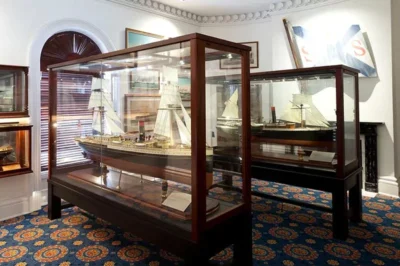Army Forts in Georgia US: Military Bases and Their Locations
Georgia has a rich military history and a vital role in the United States’ national defense. As home to numerous army forts and bases, Georgia has long been a hub of military activity, training, and support.
- Fort Benning, Georgia Army Base
- Camp Frank D Merrill Army Base
- Dobbins Air Reserve Base
- Fort Gordon Army Base
- Hunter Army Airfield Army Base
- Kings Bay Submarine Base
- Marine Corps Logistics Base Albany
- Fort Mcpherson Army Base
- Moody Air Force Base
- NAS Atlanta
- Robins Air Force Base
- Fort Stewart, Georgia Army Base
- Conclusion
These installations play a crucial role not only in ensuring the safety and security of the nation, but also in contributing to the local communities that surround them.
In this blog post, we will take a closer look at the various army forts in Georgia, delving into their history, missions, and impact on the communities they call home. From Fort Benning’s extensive training programs to the cutting-edge technology at Fort Gordon, each installation has a unique story to tell.
Fort Benning, Georgia Army Base
Located near Columbus, Georgia, Fort Benning was established in 1918 and has since become one of the largest and most significant military installations in the United States. Spanning over 182,000 acres, Fort Benning is home to the Maneuver Center of Excellence (MCoE), which is responsible for training and educating soldiers in infantry and armor operations.
The MCoE focuses on leadership development, tactical skills, and physical fitness, ensuring that the soldiers trained at Fort Benning are prepared for the challenges they will face in their military careers.

Fort Benning is also the site of the U.S. Army Infantry School, the U.S. Army Armor School, and the Western Hemisphere Institute for Security Cooperation (WHINSEC). These institutions provide specialized training and education for both U.S. and international military personnel.
In addition to these schools, Fort Benning hosts a variety of other units and commands, including the 75th Ranger Regiment, the 199th Infantry Brigade, and the 316th Cavalry Brigade.
The local community surrounding Fort Benning benefits significantly from the installation’s presence, as it provides a major source of employment and economic stability. Fort Benning is one of the largest employers in the region, with over 26,000 military personnel and 7,000 civilian employees working on the base. The installation also contributes to the local economy through contracts, services, and support for local businesses.
Camp Frank D Merrill Army Base
Camp Frank D. Merrill Army Base is located in the scenic Chattahoochee National Forest near Dahlonega, Georgia. Established in 1952, the base was named in honor of Brigadier General Frank D. Merrill, who led the famed Merrill’s Marauders during World War II. The base’s remote and rugged terrain makes it an ideal location for specialized training in mountain warfare and military mountaineering.
Camp Merrill is best known for its role as the home of the 5th Ranger Training Battalion, a crucial component of the U.S. Army Ranger Training Brigade.

The base serves as the primary site for the mountain phase of the elite U.S. Army Ranger School, which tests and trains candidates in mountain combat tactics, high-angle shooting, and survival skills. This challenging phase of training pushes Rangers to their physical and mental limits, preparing them for the rigors of real-world combat scenarios in mountainous environments.
In addition to the mountain phase of Ranger School, Camp Merrill also hosts various other training programs and exercises, such as the International Mountain Warfare Course. The base features specialized training facilities, including rappel towers, obstacle courses, and a high-altitude shooting range.
The rugged terrain of the surrounding Chattahoochee National Forest provides the perfect backdrop for realistic training exercises, enhancing the skills and capabilities of the soldiers who train there.
Dobbins Air Reserve Base
Dobbins Air Reserve Base, situated in Marietta, Georgia, has a storied history and a significant role in the United States’ military operations. Established in 1943, the base has evolved over the years to accommodate the changing needs of the military.
Today, Dobbins ARB serves as the primary facility for the Air Force Reserve Command and the Georgia Air National Guard, providing support for a variety of missions and operations.

The primary mission of Dobbins Air Reserve Base is to train and equip air reserve components to ensure they are ready to deploy and support military and humanitarian operations worldwide. This is accomplished through a combination of rigorous training exercises, specialized equipment, and highly skilled personnel. The base is home to several major units, including the 94th Airlift Wing and the 22nd Air Force, both of which play vital roles in national defense and disaster response efforts.
Dobbins ARB is also equipped with a diverse array of aircraft, such as the C-130 Hercules, which is used for tactical airlift missions. These versatile aircraft have seen action in a wide range of scenarios, from disaster relief efforts to combat support missions, demonstrating the importance of Dobbins Air Reserve Base in maintaining a responsive and agile military force.
Fort Gordon Army Base
Fort Gordon Army Base, located in Augusta, Georgia, is a vital installation with a long and storied history. Established in 1941, Fort Gordon has evolved over time to meet the changing needs of the United States military.
Today, the base is primarily focused on providing comprehensive training in cyber, signal, and electronic warfare, making it an essential hub for the development of cutting-edge military technology and tactics.

Fort Gordon is home to several significant units and commands, including the U.S. Army Cyber Center of Excellence, the Cyber Protection Brigade, and the 15th Regimental Signal Brigade. These units work together to train and develop the next generation of cyber and signal professionals, equipping them with the skills and knowledge necessary to defend the nation’s digital infrastructure and maintain secure communications on the battlefield.
One of the primary missions of Fort Gordon is to support the Army’s growing cyber and electronic warfare capabilities. The base boasts state-of-the-art training facilities that allow soldiers to hone their skills in realistic environments, simulating the challenges they will face in the field. This hands-on approach ensures that the military personnel stationed at Fort Gordon are well-prepared to confront a wide range of threats, from cyber-attacks to electronic warfare operations.
Hunter Army Airfield Army Base
Hunter Army Airfield, located in Savannah, Georgia, is a crucial component of the United States Army’s air deployment capabilities. Established in 1929 as a municipal airport, it was taken over by the U.S. Army Air Corps in 1940 and has since played a vital role in multiple military operations.
Originally known as Savannah Municipal Airport, the airfield was renamed Hunter Army Airfield in 1940 in honor of Lieutenant Colonel Frank O’Driscoll Hunter, a World War I flying ace. The base has a rich history, including its involvement in World War II, the Cold War, and the Global War on Terrorism. It has supported various combat and humanitarian operations, such as Operations Desert Shield and Desert Storm, Operation Iraqi Freedom, and hurricane relief efforts.

Hunter Army Airfield serves as a vital deployment platform for rapid-response airborne and air assault missions. The base is equipped with a 11,375-foot runway, one of the longest on the East Coast, enabling it to accommodate heavy cargo planes, such as the C-5 Galaxy and C-17 Globemaster III. The airfield’s strategic location on the Eastern Seaboard and its proximity to Fort Stewart make it an essential hub for deploying troops and supplies across the globe.
Hunter Army Airfield is home to the 3rd Infantry Division’s aviation assets, including the 3rd Combat Aviation Brigade, which operates a variety of helicopters such as the UH-60 Black Hawk, CH-47 Chinook, and AH-64 Apache. Additionally, the airfield hosts units from the U.S. Coast Guard, the Army National Guard, and the Army Reserve.
Kings Bay Submarine Base
Kings Bay Submarine Base, located in Kings Bay, Georgia, is a critical component of the United States’ naval power and defense strategy. Established in 1978, this strategic base is home to the U.S. Navy’s ballistic missile submarines, serving as a key deterrent to potential adversaries. In this article, we will delve into the history, role, and community involvement of the Kings Bay Submarine Base.
The Kings Bay Submarine Base was initially developed as a result of the 1976 agreement between the United States and Spain, wherein the U.S. agreed to withdraw its submarine fleet from Rota, Spain.
Construction began in 1978, and the base became operational in 1980. Throughout its history, Kings Bay has served as a critical component of the United States’ strategic deterrence capabilities.


As the homeport for the U.S. Navy’s Atlantic Fleet of Ohio-class ballistic missile submarines, Kings Bay Submarine Base plays an essential role in maintaining the nation’s nuclear deterrence capabilities.
These submarines are armed with Trident II D5 ballistic missiles, providing a powerful and stealthy means of delivering a nuclear payload in the event of a conflict.
In addition to housing the ballistic missile submarines, Kings Bay is also home to the Trident Refit Facility (TRF). The TRF is responsible for maintaining and upgrading the submarines, ensuring they remain in optimal condition for their vital missions. The facility employs skilled technicians, engineers, and other personnel who work tirelessly to keep the submarines combat-ready.
Marine Corps Logistics Base Albany
Located in the southwestern part of Georgia, Marine Corps Logistics Base (MCLB) Albany plays an essential role in providing logistical support to the United States Marine Corps. Established in 1952, the base covers over 3,600 acres and has been a vital part of the Marine Corps’ mission for more than seven decades.
MCLB Albany is one of only two such bases in the United States, with the other being MCLB Barstow in California. The primary mission of MCLB Albany is to rebuild and repair ground combat and support equipment, ensuring the readiness and effectiveness of the Marine Corps’ fighting force.

The base specializes in maintaining, repairing, and overhauling various military vehicles and equipment, including tanks, amphibious assault vehicles, and light armored vehicles.
The Marine Corps Logistics Command (MARCORLOGCOM) is the primary tenant command at MCLB Albany. This command is responsible for providing worldwide logistics support to the Marine Corps, both in peacetime and during military operations.
Other important units stationed at MCLB Albany include the Marine Depot Maintenance Command (MDMC) and the Marine Corps Systems Command (MCSC). The MDMC is responsible for depot-level maintenance, while the MCSC manages the acquisition and sustainment of Marine Corps weapon systems.
Fort Mcpherson Army Base
Fort McPherson Army Base, located in Atlanta, Georgia, was established in 1885 and served as an important military installation for over a century. The base was named in honor of Major General James Birdseye McPherson, a Union general who lost his life during the Civil War.
Throughout its history, Fort McPherson played a vital role in the defense and support of the United States, housing various commands and units.
During World War I, Fort McPherson was utilized as a training camp for troops and officers, as well as a detention center for prisoners of war. The base continued to serve as a critical training facility during World War II, where it was responsible for the training and mobilization of thousands of soldiers.
In the post-war era, Fort McPherson became the headquarters for several key military organizations, including the Third Army, Forces Command (FORSCOM), and the U.S. Army Reserve Command (USARC).
Throughout the Cold War, Fort McPherson continued to serve as an essential hub for military operations, coordination, and training. However, as the 21st century dawned, the base’s future became uncertain. In 2005, the Base Realignment and Closure (BRAC) Commission recommended the closure of Fort McPherson, and in September 2011, the base officially closed its gates.
Moody Air Force Base
Located in Lowndes and Lanier counties near Valdosta, Georgia, Moody Air Force Base (AFB) plays a crucial role in the United States Air Force. Established in 1941 as a World War II pilot training facility, Moody AFB has evolved into a vital base for combat-ready forces and specialized training. The base spans over 12,000 acres and supports more than 5,000 military personnel and civilians.

The 23d Wing, known as the “Flying Tigers,” is the host unit at Moody AFB. This wing specializes in close air support, combat search and rescue, and forward air control. The 23d Wing is composed of several groups, including the 23d Maintenance Group, 23d Medical Group, 23d Mission Support Group, and 347th Rescue Group. The 93d Air Ground Operations Wing is also stationed at Moody AFB, providing vital support for air-to-ground missions.
Moody AFB is home to a range of aircraft, including the A-10C Thunderbolt II, the HC-130J Combat King II, and the HH-60G Pave Hawk. These aircraft are crucial to the base’s mission of providing combat-ready forces for rapid deployment. The A-10C Thunderbolt II is designed for close air support, while the HC-130J Combat King II and HH-60G Pave Hawk are integral to search and rescue operations.
NAS Atlanta
Naval Air Station (NAS) Atlanta, located in Marietta, Georgia, was initially established in 1955 as a support facility for the U.S. Navy Reserve and Marine Corps Reserve aviation units. The base was a hub for training, operational readiness, and support missions for the reserves.
Over the years, NAS Atlanta hosted various aircraft, such as the A-4 Skyhawk, F-14 Tomcat, and C-130 Hercules, among others. In 2005, the base was closed as part of the Base Realignment and Closure (BRAC) Commission, and its functions were transferred to Dobbins Air Reserve Base, which is also located in Marietta.
NAS Atlanta was not home to the 3rd Infantry Division, as it was a Naval Air Station focused on the Navy and Marine Corps reserve aviation units.
The 3rd Infantry Division, a major formation of the U.S. Army, is instead based at Fort Stewart, which is located in Hinesville, Georgia. Fort Stewart is known for its state-of-the-art training facilities and is one of the largest military installations in the eastern United States.
Robins Air Force Base
Located just outside of Warner Robins, Georgia, Robins Air Force Base (AFB) is a key installation for the United States Air Force. Established in 1942, the base has played a significant role in the nation’s defense for over eight decades. Named in honor of Brigadier General Augustine Warner Robins, the base has grown to become one of the largest industrial complexes in the state of Georgia.
The primary mission of Robins AFB revolves around the Air Force Materiel Command (AFMC) and its Warner Robins Air Logistics Complex (WR-ALC). As one of the largest units within the AFMC, the WR-ALC is responsible for the maintenance, repair, and overhaul of a wide range of aircraft, missiles, and ground support equipment. This logistical support ensures that the Air Force maintains a high level of readiness and operational capability.

Several major units call Robins AFB home, including the 78th Air Base Wing, which provides installation support and services for the entire base. Other prominent units stationed at Robins AFB include the 116th Air Control Wing, a unique collaboration between the Georgia Air National Guard and the active-duty Air Force, and the 461st Air Control Wing, which operates the E-8C Joint STARS aircraft.
The E-8C Joint Surveillance Target Attack Radar System (Joint STARS) is a vital asset for Robins AFB. These aircraft are designed for long-range surveillance, reconnaissance, and command and control, providing real-time information about enemy movements and helping to coordinate air, ground, and naval forces.
Robins AFB also houses the Museum of Aviation, the second-largest aviation museum in the U.S. Air Force. The museum showcases over 90 aircraft, as well as exhibits highlighting the history of aviation and the role of the Air Force in various conflicts. The museum is open to the public and offers an educational and engaging experience for visitors of all ages.
Fort Stewart, Georgia Army Base
Fort Stewart, located in the heart of coastal Georgia, is a military installation with a rich history and a strong connection to the local community. As the largest Army installation east of the Mississippi River, Fort Stewart boasts an expansive area of over 280,000 acres, providing ample space for training and support facilities. Home to the 3rd Infantry Division, Fort Stewart plays a critical role in maintaining national defense and ensuring the readiness of U.S. Army forces.
Established in 1940 as an anti-aircraft artillery training center, Fort Stewart has evolved over the decades to meet the changing needs of the U.S. Army. Throughout World War II, the installation served as a prisoner-of-war camp and housed German and Italian POWs.

In the years following the war, Fort Stewart transitioned into an armor and infantry training facility. In 1996, the 3rd Infantry Division relocated to Fort Stewart, solidifying its role as a crucial component of the U.S. Army’s combat readiness.
The 3rd Infantry Division, also known as the “Rock of the Marne,” has a storied history dating back to World War I. Stationed at Fort Stewart, the division focuses on mechanized infantry and armored capabilities.
The 3rd Infantry Division has played a significant role in numerous military operations, including World War II, the Korean War, the Gulf War, and the Global War on Terrorism. As one of the most deployed divisions in the U.S. Army, the soldiers at Fort Stewart are continuously honing their skills and maintaining their readiness for any mission.
Conclusion
In conclusion, Georgia’s army forts play an essential role in the defense and security of the United States while contributing significantly to the local communities and economies.
These installations, each with its unique history and mission, showcase the dedication and capabilities of the U.S. military. As symbols of strength and unity, the army forts in Georgia serve as a reminder of the sacrifices and commitment made by the service members to protect our nation and its values.












